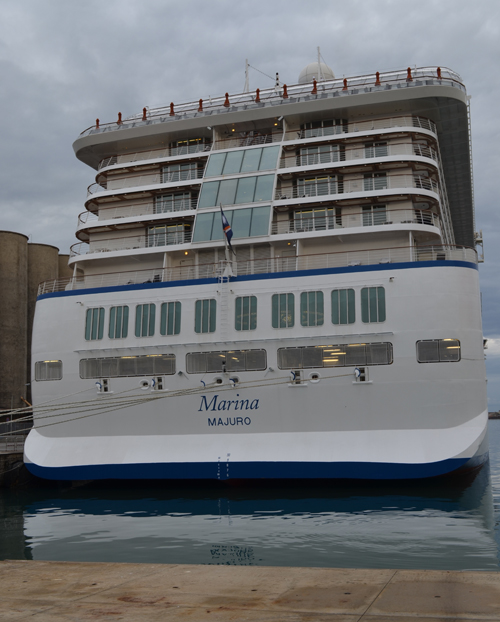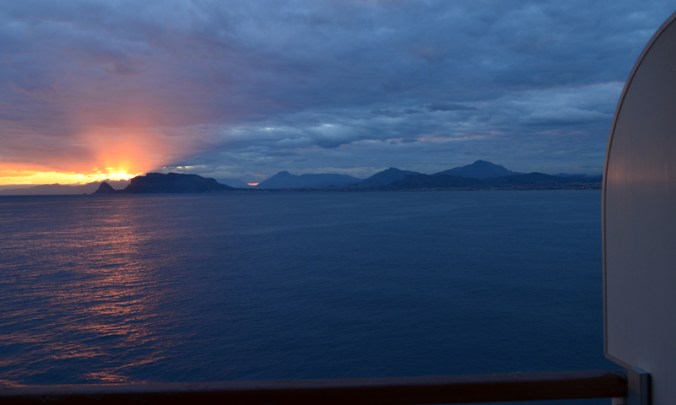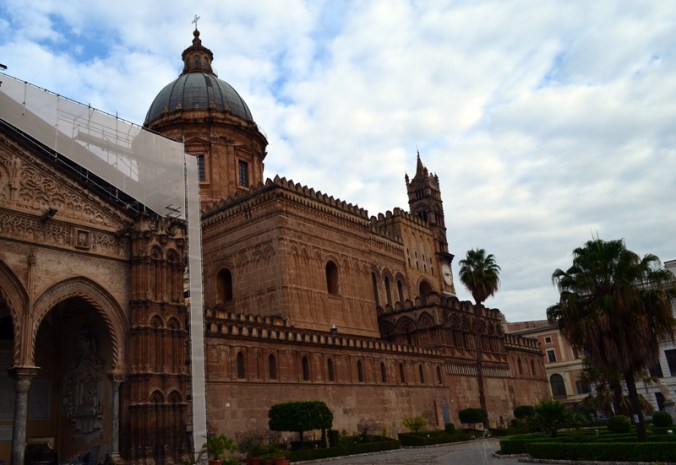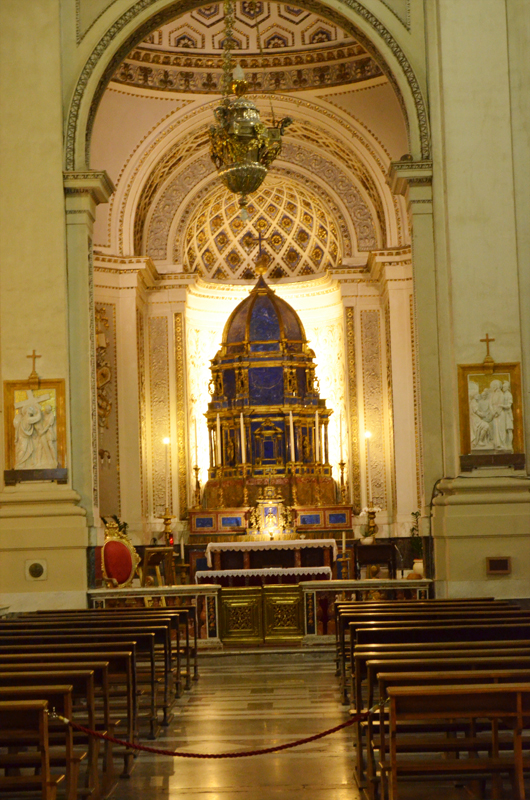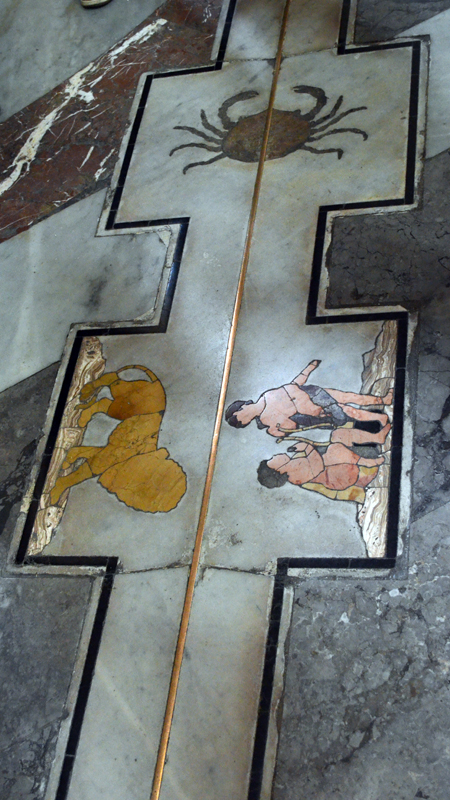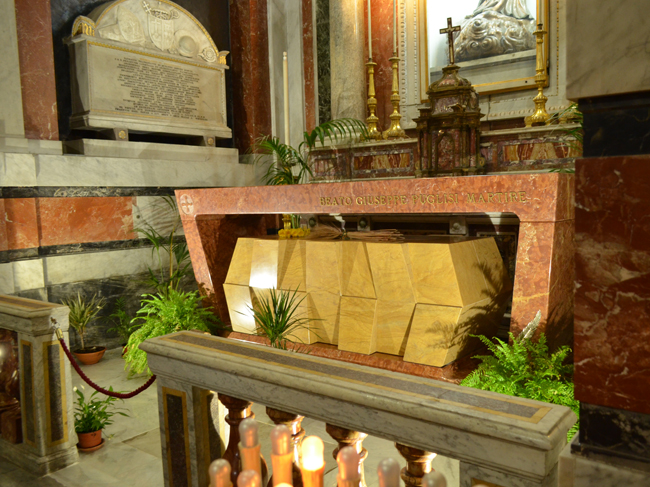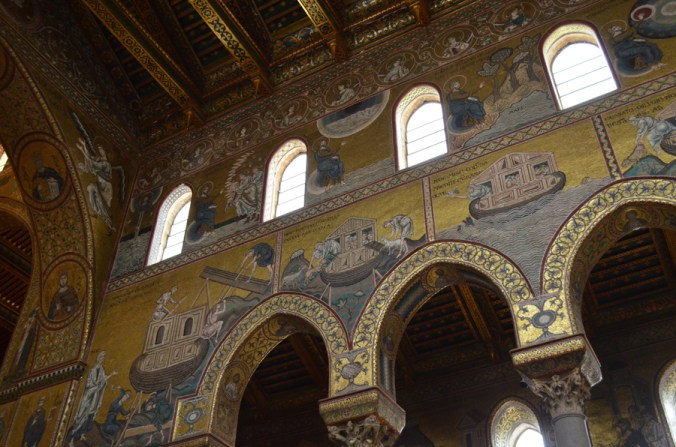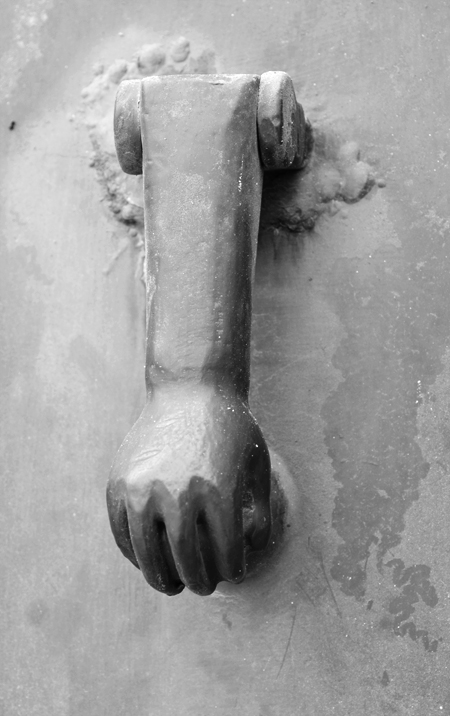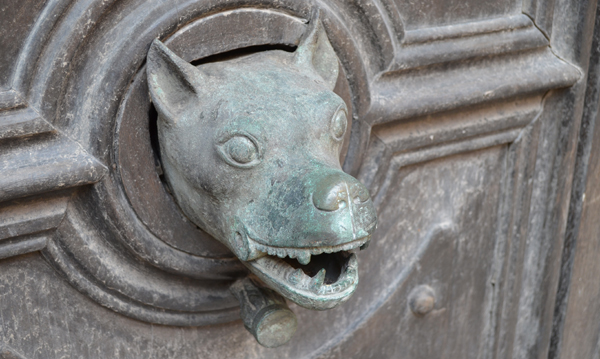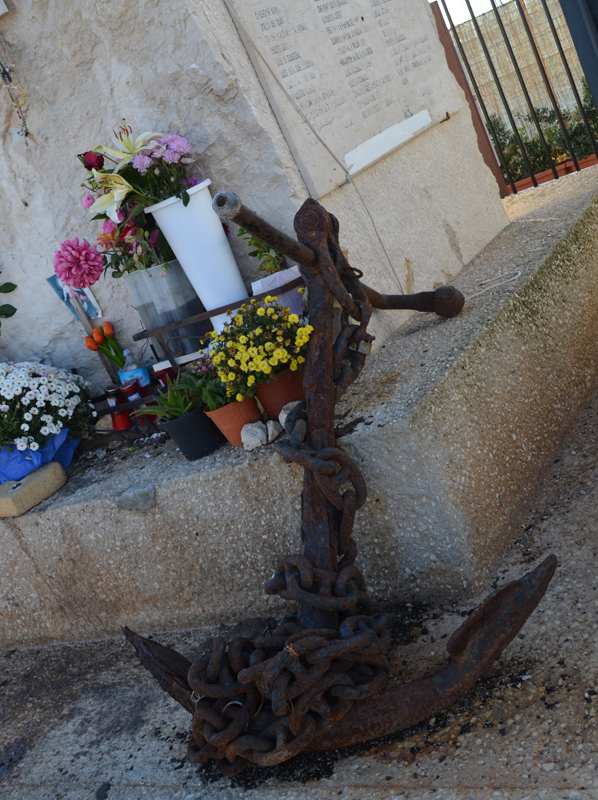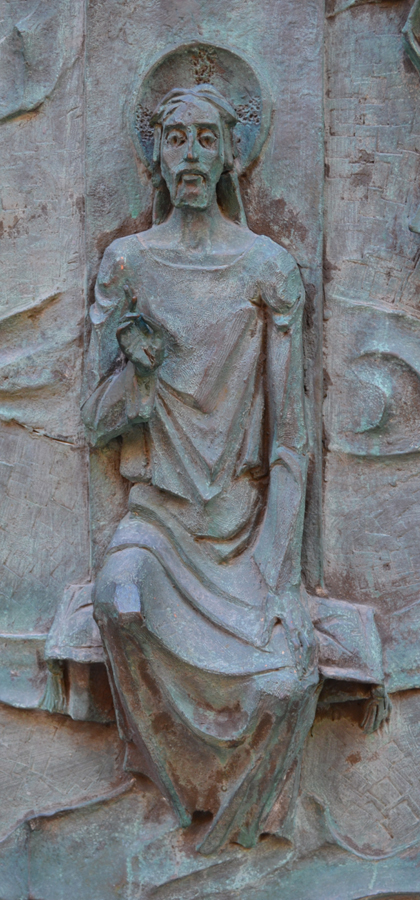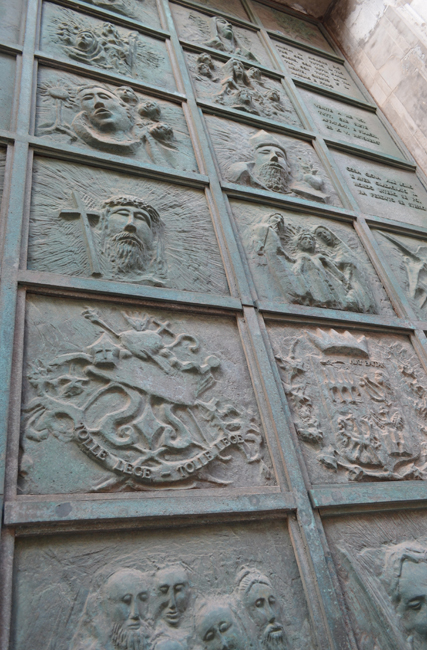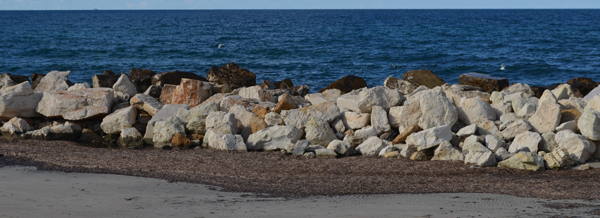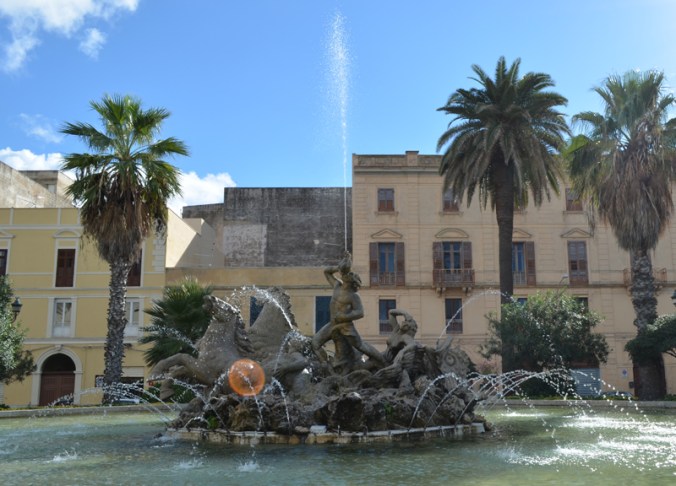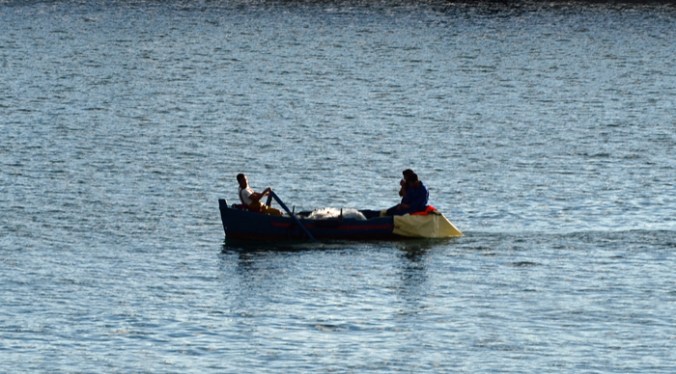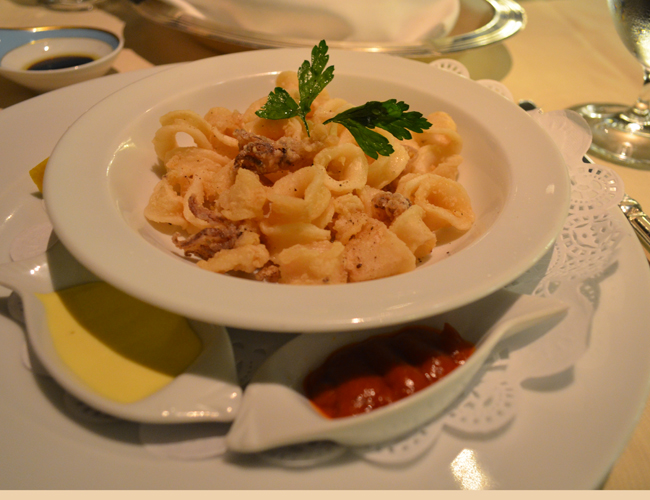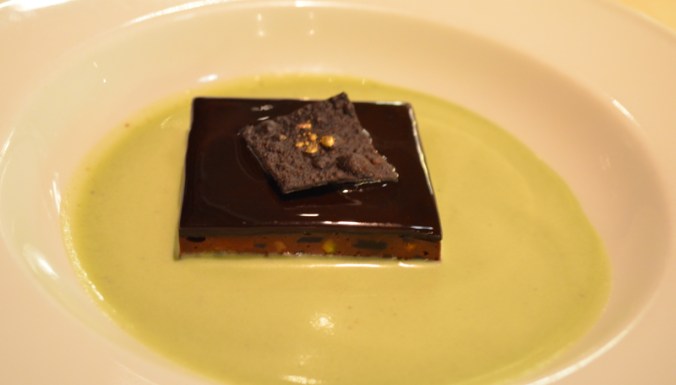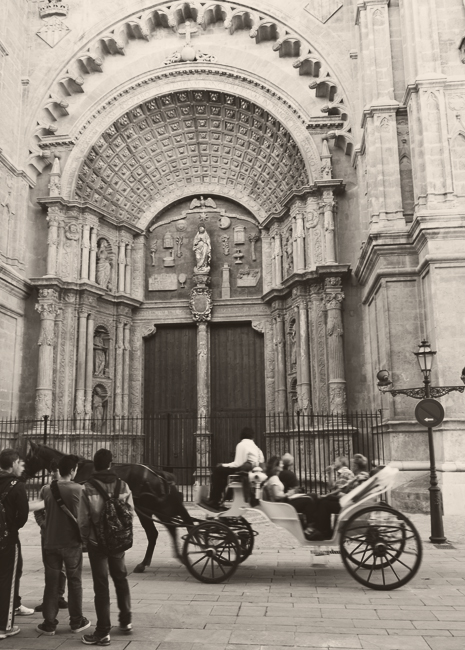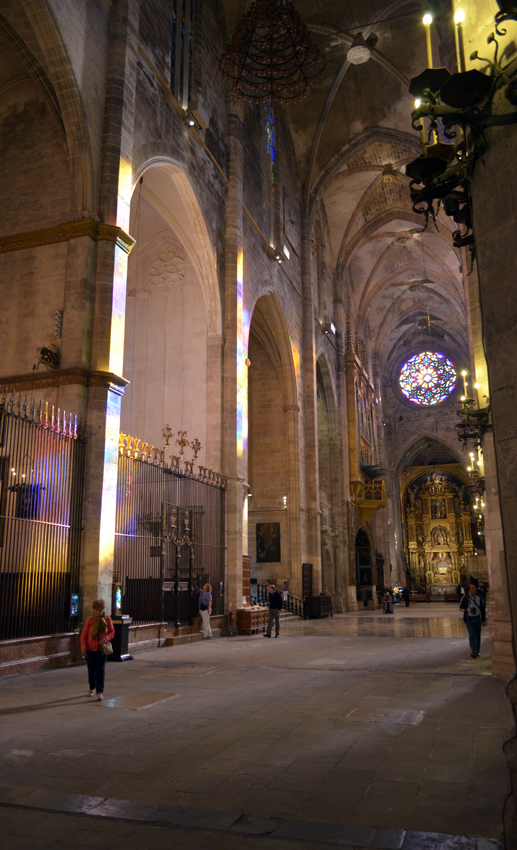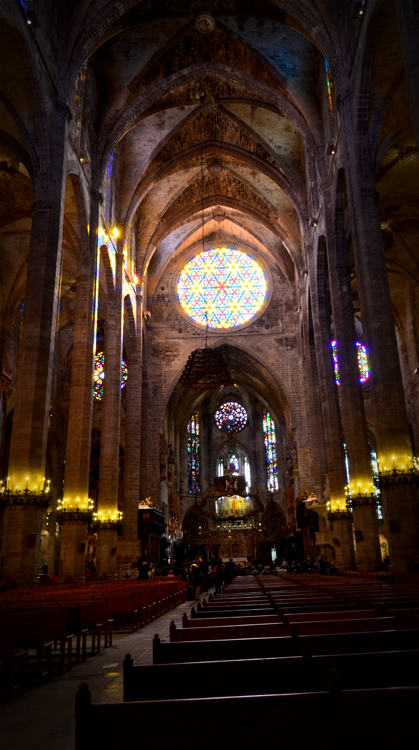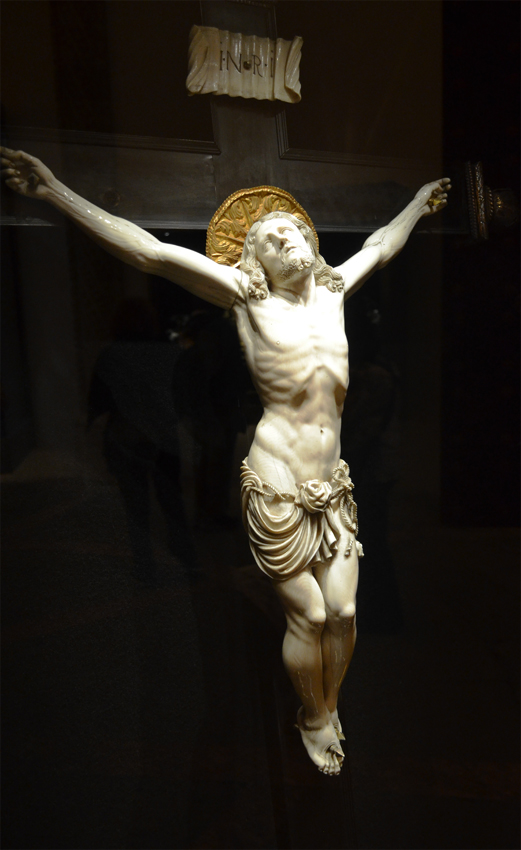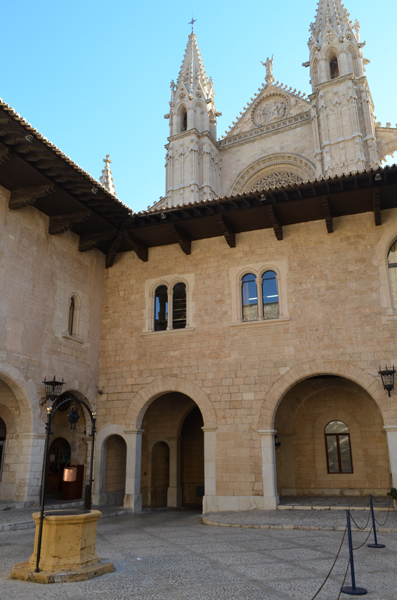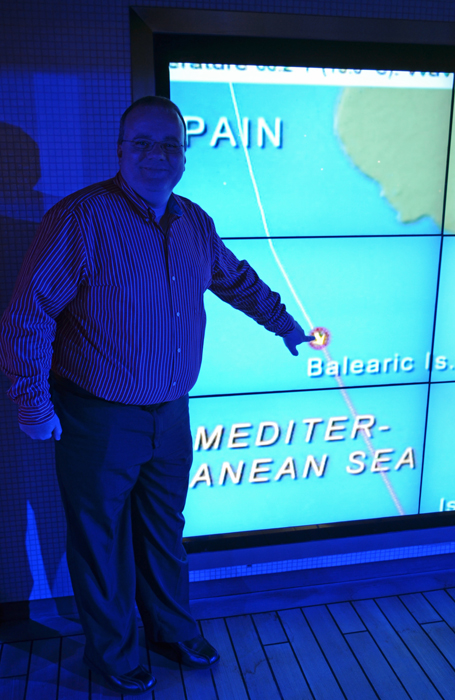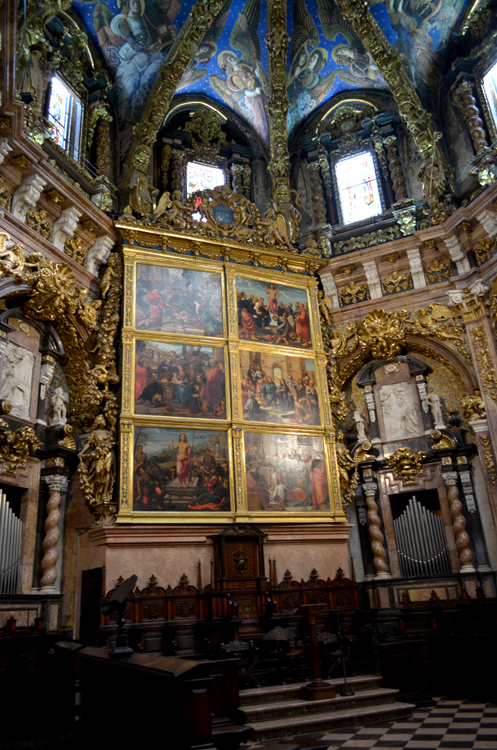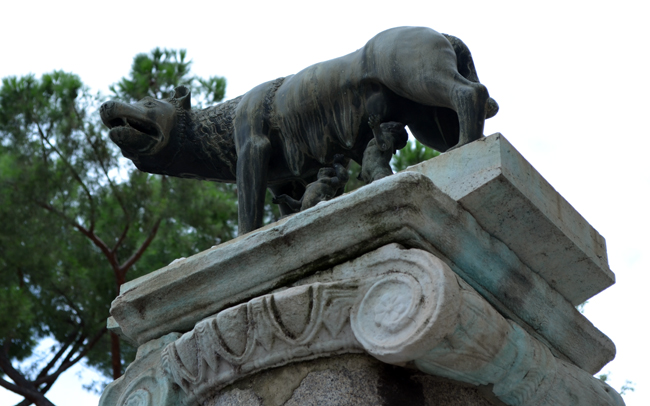 Mr. McB mentions “the dream that was Rome” in his recap of our visit. Ah, the sweet naivety of a first-time visitor; that was me before 2010. I also had a dream that was Rome but that fantasy was dashed by the reality of this frenzied and often frustrating metropolis. After that visit, I echoed Gracchus, “Rome is the mob.”
Mr. McB mentions “the dream that was Rome” in his recap of our visit. Ah, the sweet naivety of a first-time visitor; that was me before 2010. I also had a dream that was Rome but that fantasy was dashed by the reality of this frenzied and often frustrating metropolis. After that visit, I echoed Gracchus, “Rome is the mob.”
Admittedly, I was working at the time so instead of just keeping an eye on my own belongings, I was responsible for watching over the wallets and purses of a group and that’s no small feat in Rome. There are pickpockets, gypsies, and aggressive street vendors surrounding the tourist attractions. Despite all of this, Rome is still home to many famous sites that you really should see for yourself if the opportunity is presented.
We chose the “Rome on your own” excursion which included a bus ride from the port in Civitavecchia to the drop off point at Piazza Del Popolo. We had a guide on the bus who spoke about Rome, gave suggestions for our day, passed out maps, and consulted with passengers one-on-one to be sure they were prepared for the day. We could have saved money by taking the train but that has its own dangers. Should the train schedule have been disrupted, and that’s a definite possibility, we would have shelled out $300-400 to cab it back to the pier. If we took the train, we would have also missed out on the helpful tips provided by our guide.
Shortly after arriving, we went straight to the metro stop at Flaminio which is just around the corner from the drop-off. We got a little twisted around in the tunnel and needed the help of a nice Italian man to operate the turnstile but we were soon on our way to the Colosseum. The trip involves a transfer but that couldn’t have been easier. Termini station was easy to navigate with all sorts of signage. We were both stunned at just how simple it was to take the metro in Rome.
As we walked toward the Colosseum, we started to encounter those street vendors I mention earlier. These were pretty tame but it was a good reminder to be alert.
We purchased tickets online before leaving home. The Disney Fast Pass has nothing on a prepaid admission to the Colosseum. The ticket line was terribly long, even early on a day in November but we didn’t even stop; we just moved forward in the special row for those with prepaid tickets. Buying a ticket at the Forum is also an option since it includes the Colosseum but that line was at least 30 minutes long. If you have one port day in Rome, you don’t have time to waste.
On my last visit, I wasn’t able to see the Colosseum from the inside. I was very eager to explore this site but wasn’t prepared for how it would make me feel. Built in the 1st century AD, the Colosseum held 45,000 spectators and was the largest Roman amphitheater in the world. The structure was built for gladiatorial competitions and other “games” meant to win the favor and allegiance of the Roman populus. I knew what happened inside the Colosseum but I still wasn’t prepared for the feeling of sorrow that resonates through the ruins. For me, there was nothing that spoke to the glory of Rome. Yes, the structure is remarkable but it was built to make a game of death and suffering.
 It is estimated that 500,000 people, including gladiators, and over a millions wild animals were slain on the sands of the Colosseum. The death toll for a single festival in 240 A.D. includes 2,000 gladiators, 70 lions, 60 wild horses and donkeys, 30 elephants, 30 leopards, 19 giraffes, 10 elk, 10 hyenas, 10 tigers, one hippopotamus, and one rhinoceros. The festival may have lasted for several months but does that make it any easier to comprehend?
It is estimated that 500,000 people, including gladiators, and over a millions wild animals were slain on the sands of the Colosseum. The death toll for a single festival in 240 A.D. includes 2,000 gladiators, 70 lions, 60 wild horses and donkeys, 30 elephants, 30 leopards, 19 giraffes, 10 elk, 10 hyenas, 10 tigers, one hippopotamus, and one rhinoceros. The festival may have lasted for several months but does that make it any easier to comprehend?

 It is also believed that early Christians might have been martyred here. There is proof that Christians were slain in other arenas in the Roman empire, including one that stood near the present day site of St. Peter’s so it is not unrealistic to think they were also killed in the Colosseum. For this reason, it is considered a holy site. The Pope conducts the Stations of the Cross outside the structure on Good Friday.
It is also believed that early Christians might have been martyred here. There is proof that Christians were slain in other arenas in the Roman empire, including one that stood near the present day site of St. Peter’s so it is not unrealistic to think they were also killed in the Colosseum. For this reason, it is considered a holy site. The Pope conducts the Stations of the Cross outside the structure on Good Friday.
 The bodies of fallen men and animals were taken out of the death gate and dumped into a common burial pit. When workers excavated the site in the 1800s, they had to take frequent breaks because of the overwhelming stench that remained centuries later.
The bodies of fallen men and animals were taken out of the death gate and dumped into a common burial pit. When workers excavated the site in the 1800s, they had to take frequent breaks because of the overwhelming stench that remained centuries later.
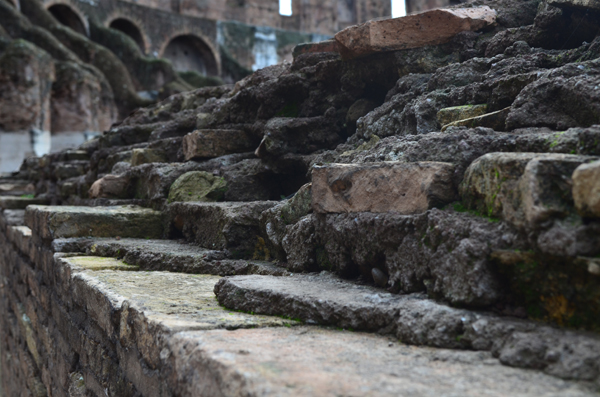
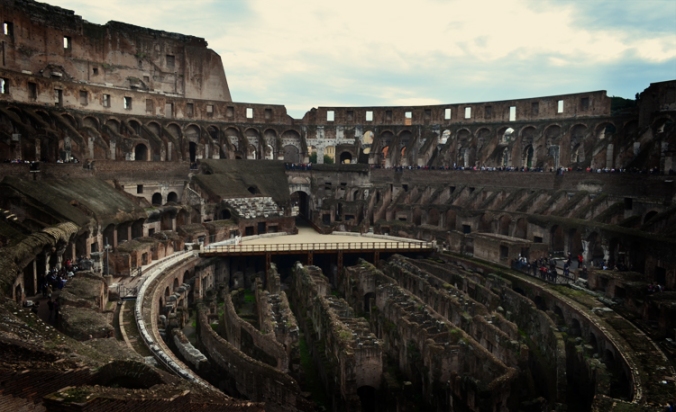 It’s easy to condemn those who created and watched this spectacle. As we walked through the site, I thought about football and the current state of player safety and head injuries. It was uncomfortable to think about this and draw the natural parallel between these games and those that we enjoy today.
It’s easy to condemn those who created and watched this spectacle. As we walked through the site, I thought about football and the current state of player safety and head injuries. It was uncomfortable to think about this and draw the natural parallel between these games and those that we enjoy today.
 Gladiatorial games were outlawed in the 5th century. Games involving animals continued for another century but by 523 those were gone and the arena was unused and fell into centuries of disrepair.
Gladiatorial games were outlawed in the 5th century. Games involving animals continued for another century but by 523 those were gone and the arena was unused and fell into centuries of disrepair. 
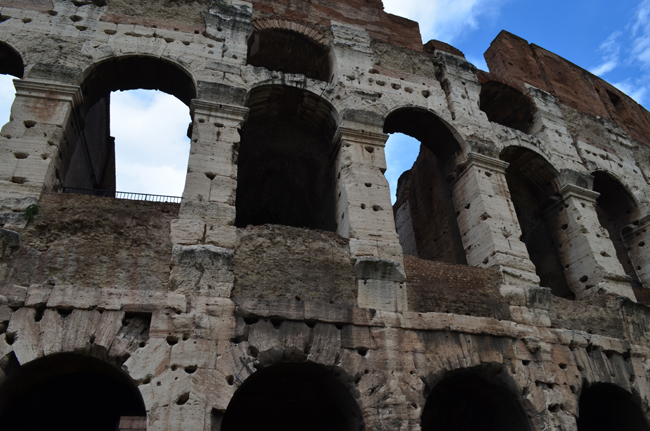
The Colosseum was once covered in Travertine marble. This was removed after the arena fell into disuse. Much of the marble was used in the construction of St. Peter’s and other churches.
 Temple of Venus and Roma from the Colosseum
Temple of Venus and Roma from the Colosseum
 This view of the Arch of Constantine is visible from the upper level of the Colosseum near the gift shop. After winning a key battle against Maxentius and attributing his success to a vision of Christ, Constantine converted to Christianity and declared that the religion was to be tolerated in the empire. This allowed for the end of persecution and the start of Christendom.
This view of the Arch of Constantine is visible from the upper level of the Colosseum near the gift shop. After winning a key battle against Maxentius and attributing his success to a vision of Christ, Constantine converted to Christianity and declared that the religion was to be tolerated in the empire. This allowed for the end of persecution and the start of Christendom.
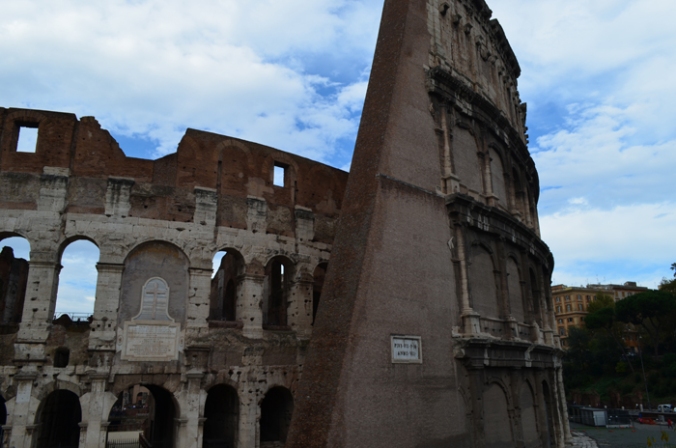 After leaving the Colosseum, we made our way to the Roman Forum. Again, we avoided the main line and were inside the site in just a matter of minutes.
After leaving the Colosseum, we made our way to the Roman Forum. Again, we avoided the main line and were inside the site in just a matter of minutes.
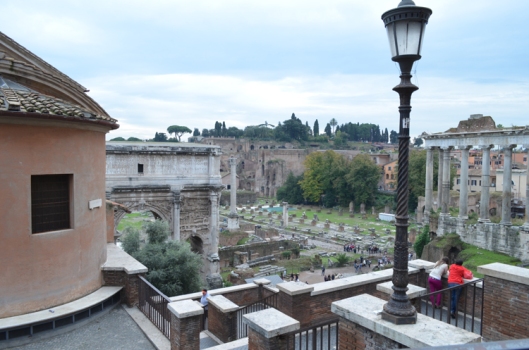
I regret not having an audio tour or guidebook as we made our way through this sprawling site.
 The Arch of Titus commemorates the sacking of Jerusalem in 70 A.D. The Arch de Triomphe is modeled after this structure.
The Arch of Titus commemorates the sacking of Jerusalem in 70 A.D. The Arch de Triomphe is modeled after this structure.


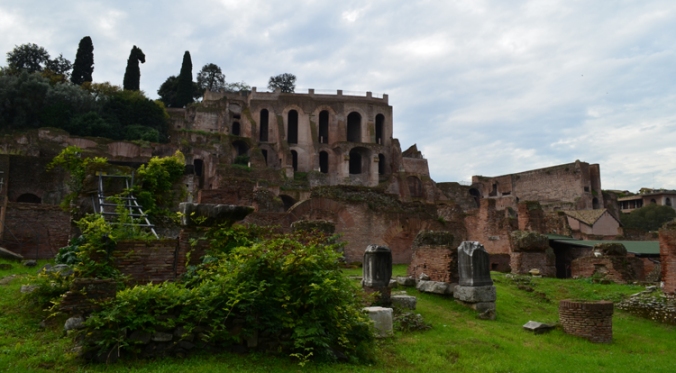
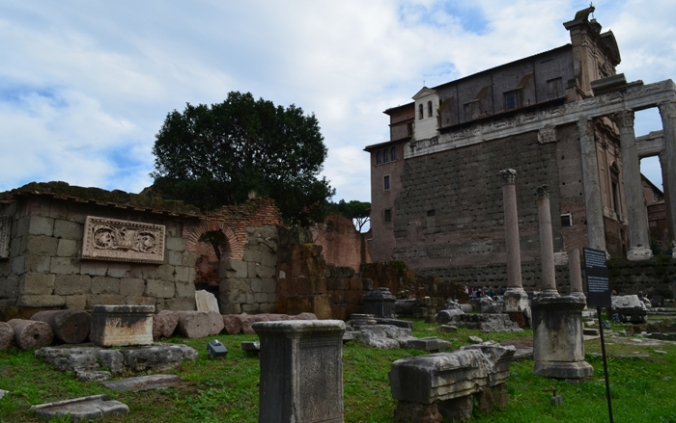 Part of the Basilica Aemilia and the larger Temple of Antoninus and Faustina. Built in honor of a deified emperor and his wife, the temple is now a Catholic church.
Part of the Basilica Aemilia and the larger Temple of Antoninus and Faustina. Built in honor of a deified emperor and his wife, the temple is now a Catholic church.

 Another former temple that went on to become a Catholic church. In this instance Emperor Maxentius devoted the site to his son Valerius Romulus, who died in 309. Maxentius is the emperor who lost in battle to Constantine. While trying to cross the Tiber during that battle, he fell into the water and drowned.
Another former temple that went on to become a Catholic church. In this instance Emperor Maxentius devoted the site to his son Valerius Romulus, who died in 309. Maxentius is the emperor who lost in battle to Constantine. While trying to cross the Tiber during that battle, he fell into the water and drowned.
After leaving the Roman Forum, we set out for Capitoline Hill or Campidoglio. Our research told us this was a great place to get a view of the city and to see statues created by Michelangelo.
 Palazzo Senatorio
Palazzo Senatorio
The fountain features the gods of the Nile and Tiber rivers.
Minerva stands in the middle.
 The Nile
The Nile
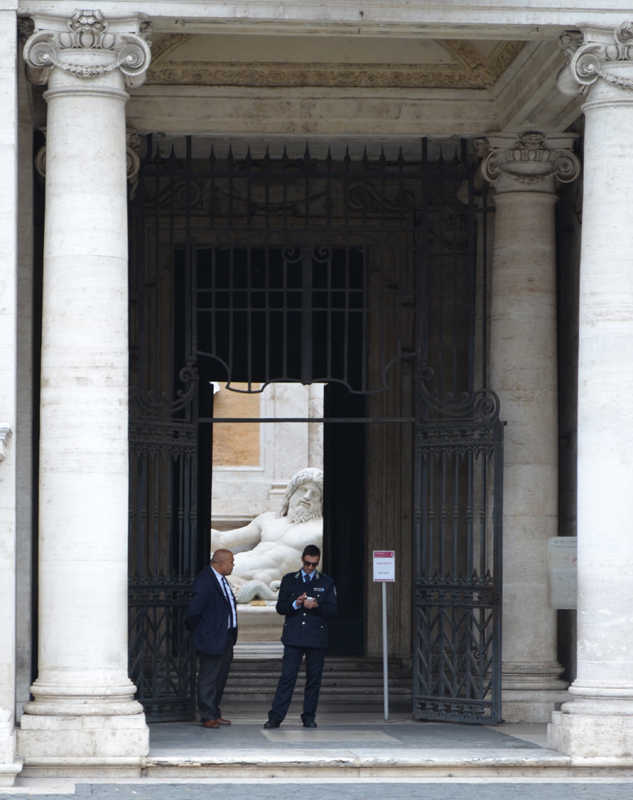 I’m not sure who that fellow is but as you can see, he is enormous.
I’m not sure who that fellow is but as you can see, he is enormous.
If we go back to Rome, I want to visit the museum here.
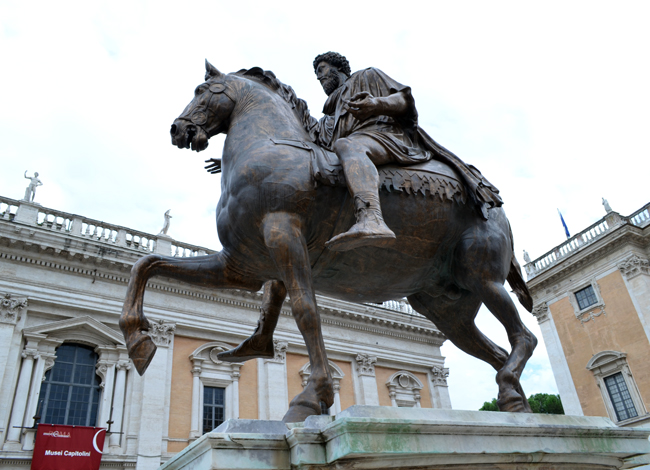 This is a bronze copy of a statue of Marcus Aurelius. The original was saved because it was mistaken for a statue of Constantine. It is the only fully surviving bronze statue of a pre-Christian Roman emperor.
This is a bronze copy of a statue of Marcus Aurelius. The original was saved because it was mistaken for a statue of Constantine. It is the only fully surviving bronze statue of a pre-Christian Roman emperor.
 Michelanglo’s statue of Castor
Michelanglo’s statue of Castor
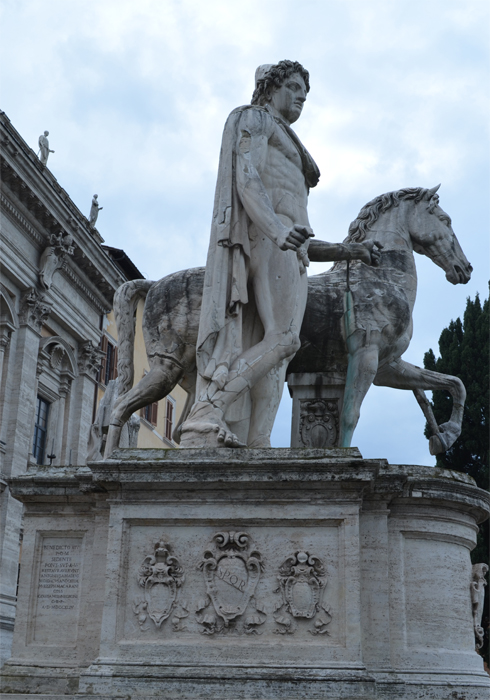 Here’s Pollux with his arm outstretched.
Here’s Pollux with his arm outstretched.
Before heading to the Panethon, we stopped at Il Vittoriano or Altare della Patria (Altar of the Fatherland), a national monument.
 The monument is home to the Tomb of the Unknown. It also honors Vittorio Emanuele II, the first king of a unified Italy. The structure is interesting architecturally, though not well-loved by most Italians as it is seen as a bit overwhelming given its proximity to the ancient ruins.
The monument is home to the Tomb of the Unknown. It also honors Vittorio Emanuele II, the first king of a unified Italy. The structure is interesting architecturally, though not well-loved by most Italians as it is seen as a bit overwhelming given its proximity to the ancient ruins.
We made our way through the increasingly crowded streets and arrived at the Pantheon.
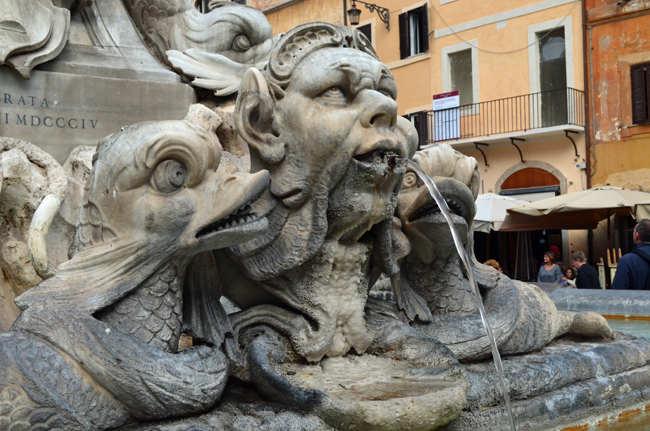
 Now a Catholic church, the Pantheon began its life as a temple that was devoted to all gods (Pan-theon). The Pantheon is best known for its dome and oculus. Made of cast concrete, the dome is a perfect hemisphere resting on a solid ring wall. Michelangelo studied this dome before beginning work on the dome at St. Peter’s.
Now a Catholic church, the Pantheon began its life as a temple that was devoted to all gods (Pan-theon). The Pantheon is best known for its dome and oculus. Made of cast concrete, the dome is a perfect hemisphere resting on a solid ring wall. Michelangelo studied this dome before beginning work on the dome at St. Peter’s.
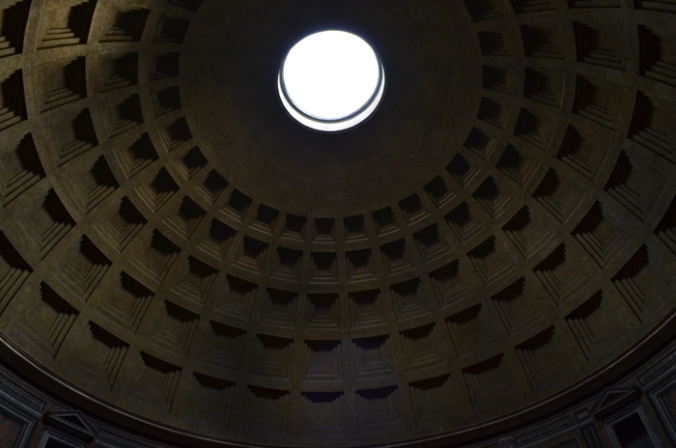 Inside you will find a number of notable tombs including Raphael, the artist not the turtle, and Vittorio Emanuele II. It’s easy to forget that this is a church but keep it in mind and behave accordingly.
Inside you will find a number of notable tombs including Raphael, the artist not the turtle, and Vittorio Emanuele II. It’s easy to forget that this is a church but keep it in mind and behave accordingly.
 With an ever-growing rumble in our tummies, we soon sat off for the Piazza Navona to grab a bite. Our guide highly recommend this area of town and the tartufo, an ice cream specialty. After a short walk, we were greeted by a lovely square filled with artists and restaurants. Our guide said this is a spot frequented by Romans, and not just tourists.
With an ever-growing rumble in our tummies, we soon sat off for the Piazza Navona to grab a bite. Our guide highly recommend this area of town and the tartufo, an ice cream specialty. After a short walk, we were greeted by a lovely square filled with artists and restaurants. Our guide said this is a spot frequented by Romans, and not just tourists.
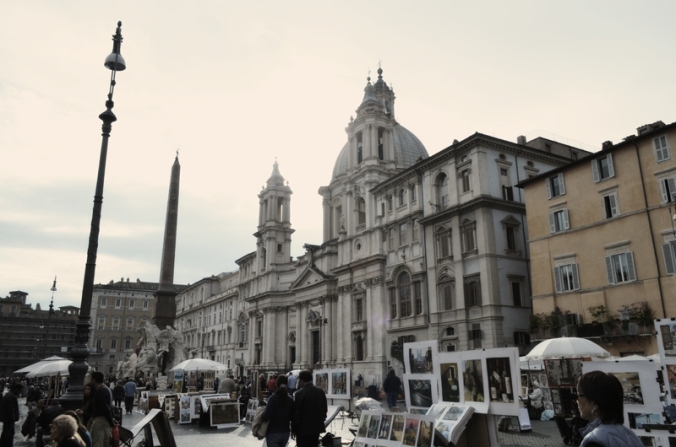
 From the Fontana dei Quattro Fiumi or Fountain of the Four Rivers
From the Fontana dei Quattro Fiumi or Fountain of the Four Rivers
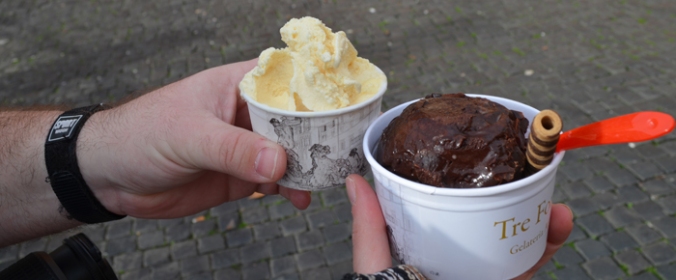 M chose a vanilla gelato while I chowed down on the tartufo. This treat features a maraschino cherry and what tasted like a bit of rum surrounded by chocolate ice cream that is then coated in a hard fudge shell. It’s rich and really unlike anything I’ve tasted before.
M chose a vanilla gelato while I chowed down on the tartufo. This treat features a maraschino cherry and what tasted like a bit of rum surrounded by chocolate ice cream that is then coated in a hard fudge shell. It’s rich and really unlike anything I’ve tasted before.
After a nice sit, we were off to Trevi Fountain. After 20-25 minutes, we made it and found ourselves amongst hundreds of tourists. With a little patience, we were able to make it down the steps and sit by the fountain for a while.

 Trevi Fountain is a pickpocket’s paradise especially with folks getting into bags and pockets to get coins for the fountain. If you go, have your coins ready before approaching. If you are wearing a backpack flip it around so the bag is on your chest. Be alert.
Trevi Fountain is a pickpocket’s paradise especially with folks getting into bags and pockets to get coins for the fountain. If you go, have your coins ready before approaching. If you are wearing a backpack flip it around so the bag is on your chest. Be alert.
After seeing the fountain, we followed our noses to Pizza In Trevi, a pizza joint around the corner. These slices were fresh, delicious and a good value. I had thin strips of eggplant on my pie. Oh so yummy!

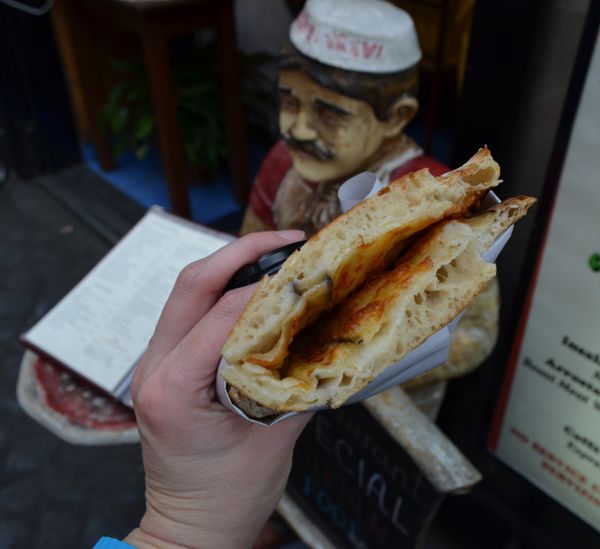 Instead of sitting down, we decided to keep walking toward the Spanish Steps. I missed them on my first trip and really wanted to see them. As it turns out, I didn’t really miss anything the first time. They are steps covered by crowds of people. It was interesting to see how people behaved (making out, leaving their iPhone unattended so it could be stepped on, lying on the steps…) but I wouldn’t go back. I cannot recommend them, especially if your time is limited.
Instead of sitting down, we decided to keep walking toward the Spanish Steps. I missed them on my first trip and really wanted to see them. As it turns out, I didn’t really miss anything the first time. They are steps covered by crowds of people. It was interesting to see how people behaved (making out, leaving their iPhone unattended so it could be stepped on, lying on the steps…) but I wouldn’t go back. I cannot recommend them, especially if your time is limited.
 We continued on toward the Piazza del Popolo as our meeting time was drawing near.
We continued on toward the Piazza del Popolo as our meeting time was drawing near.
 We stopped in to Santa Maria del Popolo. It is said that Nero is buried nearby and that his ghost haunted a particular tree that used to grow on the site of the church. After chopping down the tree, and evicting the devilish crows that lived there, the church was constructed.
We stopped in to Santa Maria del Popolo. It is said that Nero is buried nearby and that his ghost haunted a particular tree that used to grow on the site of the church. After chopping down the tree, and evicting the devilish crows that lived there, the church was constructed.
Our guide recommended this place and I’m so glad she did. On the outside, the church is nothing special but the inside is very interesting. It also houses two Caravaggio’s. You cannot photograph these works but they are worth soaking up with your own eyes and forgetting the camera for a while.
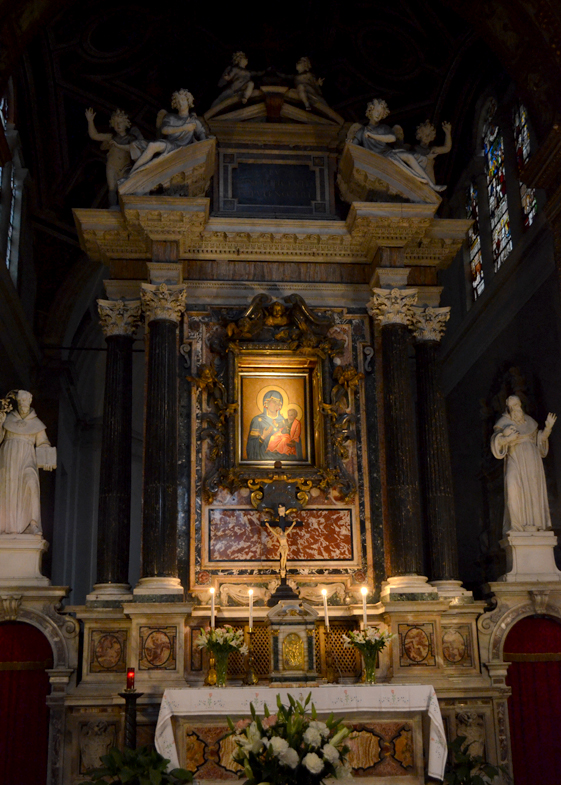 The high altar and the Madonna of Popolo
The high altar and the Madonna of Popolo
 Funeral monument of Giovanni de Castro
Funeral monument of Giovanni de Castro
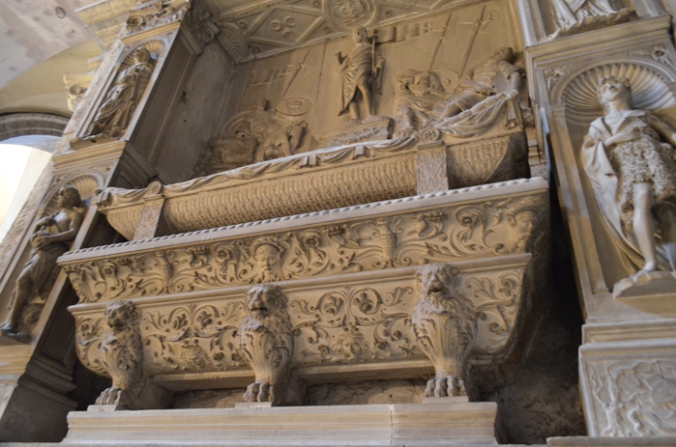
 With 45 minutes to kill, we walked away briefly to see the Tiber River. If we had enough energy, we could have hoofed it to St. Peter’s but by that point, we were both more than a little tired.
With 45 minutes to kill, we walked away briefly to see the Tiber River. If we had enough energy, we could have hoofed it to St. Peter’s but by that point, we were both more than a little tired.
 I was much happier with this trip to Rome. It’s still crazy and you have to be on guard, but there are many sites worth seeing including those that won’t make it to the “must” list in every tourist guide. Don’t be surprised if you’re a little disappointed with the famous attractions (Spanish Steps, Trevi) but there’s bound to be at least one little treasure (Piazza Navona, Maria del Popolo) that will make up for it.
I was much happier with this trip to Rome. It’s still crazy and you have to be on guard, but there are many sites worth seeing including those that won’t make it to the “must” list in every tourist guide. Don’t be surprised if you’re a little disappointed with the famous attractions (Spanish Steps, Trevi) but there’s bound to be at least one little treasure (Piazza Navona, Maria del Popolo) that will make up for it.












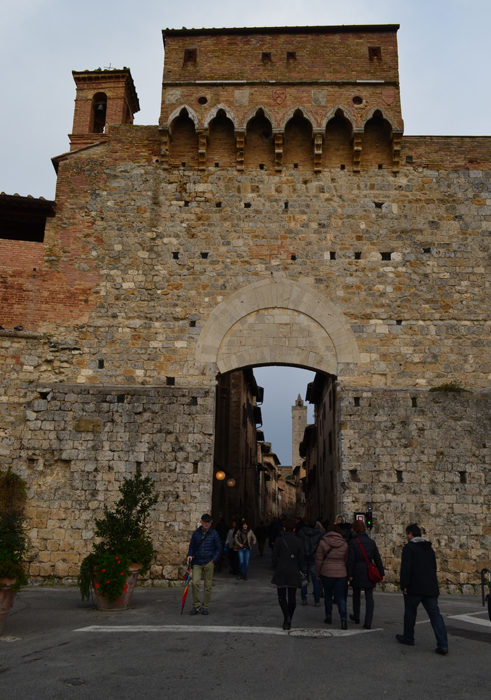
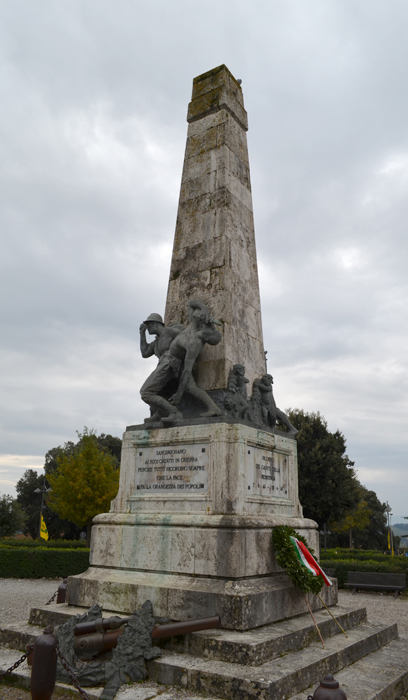



























































































 Forget a tour bus, this tour carriage seemed to be the way to go.
Forget a tour bus, this tour carriage seemed to be the way to go.

